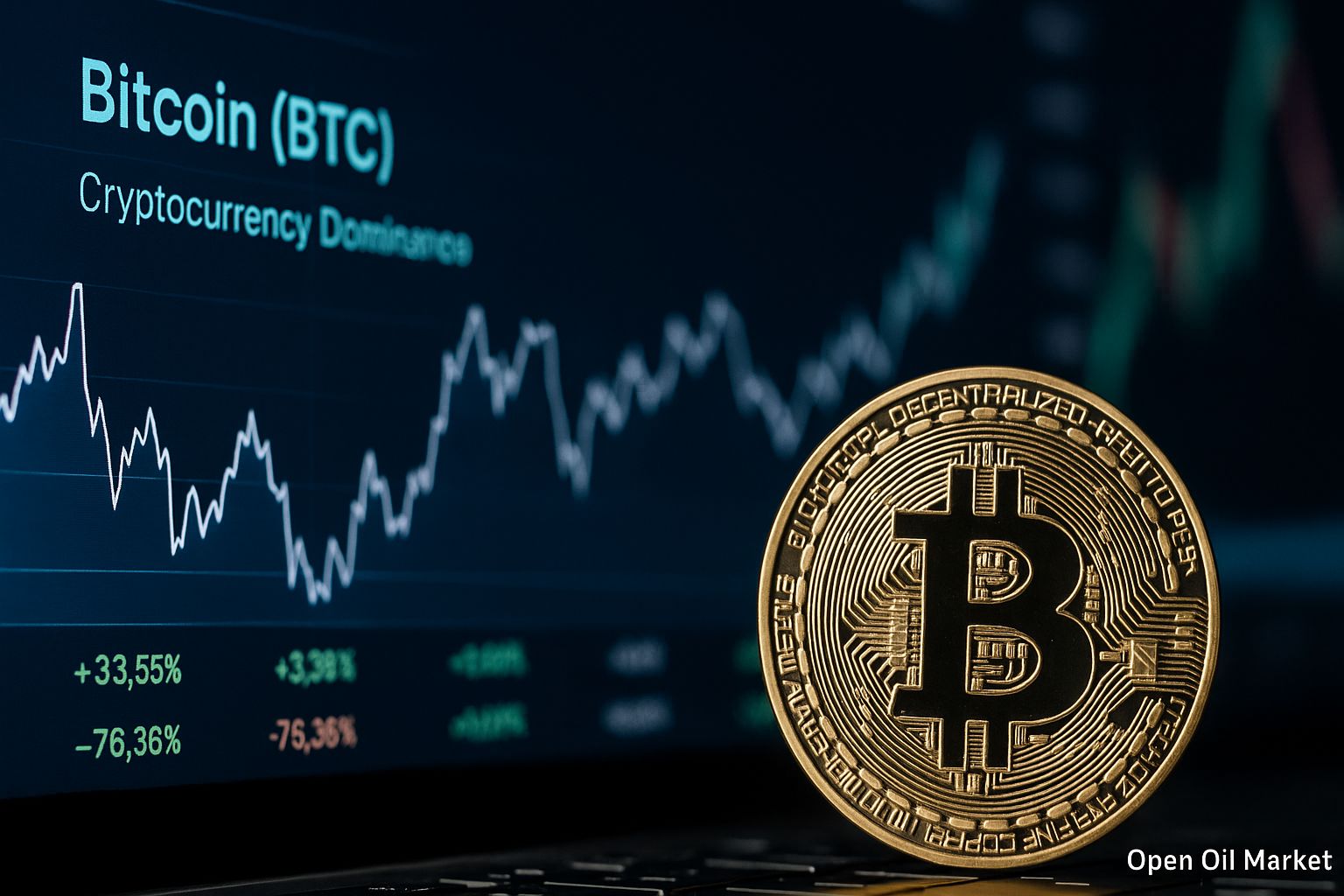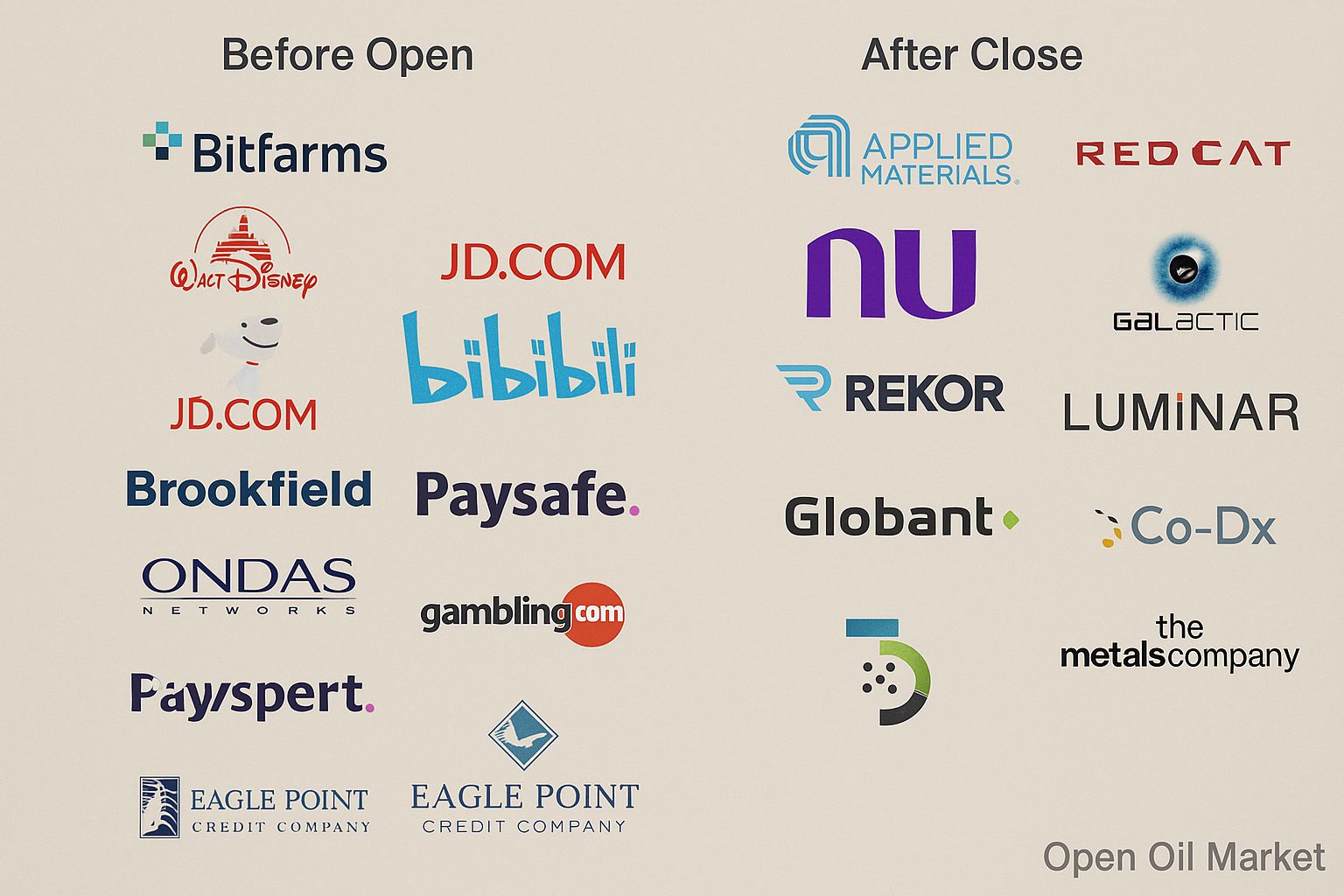
Main Economic Events on 24 October 2025: Decision of the Central Bank of Russia on Interest Rates, Inflation in the USA, Global PMI, and Earnings Reports from Major Companies – Procter & Gamble, HCA Healthcare, General Dynamics, and Others. Analysis and Forecast for Investors.
Introduction. Investors from the CIS begin their Friday on 24 October with a focus on the key economic events and fresh company reports. The business tone is set by global PMI data, inflation statistics, and key central bank decisions. Throughout the day, preliminary Purchasing Managers' Indices (PMI) will be released in several major economies, ranging from Australia and Japan to Germany and the USA. Moreover, investors will need to assess important macroeconomic indicators, including the inflation rate in the USA for September, and monitor the Central Bank of Russia's decision regarding the key interest rate. At the same time, the corporate earnings season continues: results will be presented by both American public companies from the S&P 500 index and large corporations in Europe and Asia. Below is a detailed overview of economic events and corporate releases by region, as well as their potential impact on the stock market and the investor's portfolio today.
Asia and Australia: PMI and Inflation Indicators
In the Asia-Pacific region, the morning commenced with the publication of business activity data. Australia released preliminary PMI indices for the manufacturing and services sectors for October (S&P Global Manufacturing, Services, Composite PMI) – the release came out at 02:00 Moscow time. Japan reported consumer price dynamics: the CPI index for September was published at 02:30 Moscow time. Inflation in Japan remains under close scrutiny, given the Bank of Japan's policies. Following that, at 03:30 Moscow time, preliminary estimates of Japan's PMI for October were released – indicators of business activity in manufacturing and the services sector. These figures will assist in understanding whether Japan's economic recovery persists amid recent stimulus measures and the yen's depreciation.
Additionally, at 08:00 Moscow time, India released its October PMI figures. Investors regard the Indian business activity metrics as a barometer for the health of one of the largest emerging economies. Market expectations suggested that India's PMI values would remain in the growth zone (>50), reflecting robust demand and market forecasts for continued private sector expansion.
On the corporate front in Asia, there are relatively few significant earnings reports on 24 October. However, it is worth noting the report from one of India's largest banks – ICICI Bank, which is publishing its results for the second financial quarter (July-September) and could set the tone for the financial sector across emerging markets. In Japan, the earnings season is just picking up speed: many companies from the Nikkei 225 will present half-year results in the coming weeks, and there are few current releases from Japanese corporations. Therefore, the Asian markets are primarily reacting to macroeconomic statistics. On Friday morning, Asian stock indices demonstrated mixed dynamics: investors accounted for strong PMI data (for instance, a robust growth in Australia's service sector) against the backdrop of subdued inflation in Japan, collectively supporting the analysis of a gradual economic recovery in the region.
Europe: Business Activity and Corporate Reports
European investors are focused on a series of preliminary PMIs for the main economies of the region for October. In Germany, the business activity index (HCOB Manufacturing/Services PMI) was released at 10:30 Moscow time. Preliminary figures will indicate whether the improvement noted in September continued, when the aggregate business activity in the Eurozone grew at its fastest pace in 16 months. Analysts expect that German PMIs will remain close to September levels, indicating a forecast for gradual stabilization in the industry amid persistent weaknesses in the manufacturing sector. At 11:00 Moscow time, the composite PMI for the Eurozone was published – a key leading indicator for the region. Its dynamics will reveal whether the Eurozone can sustain its growth momentum or is facing a new slowdown. According to S&P Global forecasts, the September surge may continue, but investors are closely watching how political uncertainties (for example, recent events in France) are affecting business confidence.
Almost simultaneously, at 11:30 Moscow time, PMI data for the United Kingdom were released. The British economy had previously shown signs of stagnation – the September PMI indicated a sharp slowdown in growth and a reduction in employment. The preliminary October index will show whether the UK managed to avoid a downturn. In addition to the PMI, data on retail sales and consumer confidence indices (for instance, the GfK index) may have been released in Britain this morning, which complements the picture of the economy's state. High inflation (the latest estimate being 3.8% year-on-year in August) remains a problem for the Bank of England, so any signs of weakening business activity against the backdrop of high inflation put the regulator in a challenging position.
The European corporate sector also presents several important reports. NatWest Group (NWG), one of the largest banks in the United Kingdom, presented its results for Q3 2025 early this morning (at 07:00 BST, 09:00 Moscow time). The bank reported an increase in lending and deposits and upgraded its revenue forecast, benefiting from rising interest rates. Investors from the CIS view NatWest as a barometer for the European banking sector – its margin and asset quality metrics set the tone for other banking stocks. In France, pharmaceutical giant Sanofi published its Q3 results; management conducted a review on a morning conference call with analysts. A moderate increase in revenue was expected, driven by demand for vaccines and new drugs. In Sweden, the defence and aerospace company Saab AB released its Q3 2025 report – the company notes a rise in orders amid heightened geopolitical tensions, presenting its report at 07:30 CET and conducting a presentation at 10:00 CET.
Other major European names reporting today include the Italian oil and gas company Eni, whose Q3 results (release on 24 October) reflect price dynamics in oil and gas. Overall, across the Euro Stoxx 50 and other regional indices, the peak of quarterly corporate reporting occurs at the end of October – investors assess the first signs. Moderately positive reports from NatWest and Sanofi may support European markets, but much will depend on the overall market sentiment following the PMI publication. European stock indices opened today without a unified trend: PMI figures were close to forecasts, and attention shifted towards corporate surprises. Analysts note that trading results in Europe by the end of the week will be determined by a combination of these macro and micro factors.
Russia: CBR Decision and Corporate Outcomes
The Russian market today is focused on the Central Bank of Russia's meeting. At 13:30 Moscow time, the regulator will announce its decision on the CBR's key rate, followed by a press conference at 15:00 Moscow time. The current key rate stands at 17% per annum, following a series of increases earlier in the year. At the last three meetings, the Central Bank of Russia consecutively lowered the rate (by 1 percentage point in June, 2 percentage points in July, and 1 percentage point in September), retreating from the peak rate of 21% per annum. However, the current situation is ambiguous: annual inflation has exceeded 8% once again, and pro-inflationary risks have intensified (fuel price increases, VAT hikes from the new year, etc.). Analysts are split on forecasts: some experts believe that the regulator will pause and maintain the rate at 17% in order to curb rising inflation and a cooling economy. Others anticipate a slight reduction – from 0.25% to 0.5%, while the most daring predictions suggest a step of 100 basis points if there are signs of significant economic slowdown. SberCIB, for example, officially expects the rate to remain at 17% per annum, citing arguments in favour of a wait-and-see position. The intrigue will remain until the announcement: the Central Bank has emphasized that the October decision is not predetermined and will consider fresh data on inflation and the ruble's exchange rate.
The Russian stock market reacts to any signals from the regulator. In the morning, the MOEX index fluctuated in anticipation: investors are assessing the probabilities of a rate cut, which could support shares of real sector companies but weaken the ruble, and the scenario of maintaining the rate at 17%, which would temporarily keep yields on ruble-denominated instruments. The banking sector is in focus – particularly state banks, which are most sensitive to the CBR's decisions. VTB today is providing its quarterly report: the bank announced the release of its Q3 2025 results on exactly 24 October. This is an important event for investors in the Moscow market: following VTB's losses last year due to sanctions, the market awaits signs of profitability recovery. According to preliminary reports, the financial position of major players, including Gazprom and Sberbank, remains stable, and investors expect VTB to demonstrate improvements in metrics (interest income, fees) amid adaptations to new conditions.
Other corporate events in Russia on 24 October include news concerning dividends from oil and gas companies. The board of directors of Lukoil was supposed to discuss interim dividends yesterday; however, the meeting was cancelled due to the imposition of US sanctions. This creates uncertainty for the shares of the oil and gas sector. Nevertheless, Thursday's trading results showed a rise in the MOEX index of nearly 0.9% due to market revival following prolonged declines. Should the CBR justify investor expectations today (for instance, signalling a policy easing in the coming months or at least refraining from tightening its rhetoric), Russian shares could continue their recovery. Analysts' recommendations for investments in the local market focus on selecting export-oriented stocks (in case of a ruble depreciation following a rate cut) and being cautious with bonds, whose prices have already factored in expected rate cuts.
USA: Inflation, Business Activity, and Public Company Reports
In the afternoon, attention will shift to the American markets. At 15:30 Moscow time, a key indicator will be released – the US Consumer Price Index (CPI) for September. This release is usually published earlier in the month, but due to a recent government shutdown in the USA, there has been a delay. Inflation data are crucial for understanding the future policy of the Federal Reserve. Economists estimate that the September CPI may show an acceleration in inflation from 2.9% to approximately 3.1% year-on-year. Any value above the forecast may alarm the market: the Fed, although it has paused rate hikes, will be compelled to maintain a firm rhetoric amid rising prices. Against this backdrop, futures on US indices have been fluctuating without clear dynamics since morning – investors are hesitant to open large positions prior to the release of US inflation figures.
In addition to inflation, at 16:45 Moscow time, the preliminary composite PMI for the USA for October (S&P Global) will be published. In previous months, the USA has outpaced other developed economies in terms of growth rates, although in September there was some slowdown in business activity. The October PMI will indicate whether the USA has retained this leadership. An expectation of around 50–51 points is anticipated, signalling slight growth. Should the indicator unexpectedly fall below 50, this could heighten recession fears. However, some experts believe that the Fed’s rate cuts (which occurred earlier this autumn for the first time in a year) and expectations of further easing may have supported business activity – the PMI data will confirm or refute this analysis.
At 17:00 Moscow time, several more reports from the USA will be released: the final consumer sentiment index from the University of Michigan for October (along with household inflation expectations) and data on new home sales for September. The Michigan sentiment indicator is expected to remain around recent values – American consumers are relatively confident due to a strong labour market, although rising prices and political uncertainties (the prolonged budget shutdown, which has finally been resolved this week) might have slightly degraded expectations. New home sales are expected to show a slight decline following a summer surge, reflecting the impact of high mortgage rates on the real estate market. Collectively, all these indicators will provide a more holistic view of the state of the US economy at the beginning of the fourth quarter.
Finally, today is particularly rich in earnings reports in the USA – a number of major companies are publishing quarterly results before the opening of the American market (Friday Before Open). For investors, this is an opportunity to assess corporate profit forecasts against the backdrop of macroeconomic challenges. Below are key companies from the S&P 500 index and others, whose reports are being released on 24 October before the NYSE opens (reporting period – Q3 2025):
-
Procter & Gamble (PG) – a global leader in consumer goods. A quarterly earnings of $1.90 per share with revenue of around $22.17 billion is expected. Investors will look for signs of demand stability for consumer goods and the impact of cost inflation on margin in the report. P&G is traditionally seen as an indicator of the health of the US consumer sector.
-
HCA Healthcare (HCA) – the largest operator of private hospitals in the USA. The consensus estimate for earnings is about $5.65 per share, with revenue of $18.56 billioni. HCA’s results will reveal whether high hospital occupancy is being sustained and whether the company has managed to control cost growth. The healthcare sector is under investor scrutiny in the context of post-pandemic recovery.
-
General Dynamics (GD) – a defence contractor and industrial corporation. Earnings of $3.73 per share are projected, with revenue of approximately $12.53 billion. Given the global rise in defence spending, markets expect strong results from GD and possibly an increase in profit forecasts (the backlog of defence equipment orders is increasing). Defence company stocks have outperformed the market in recent months due to high geopolitical risks.
-
Illinois Tool Works (ITW) – a diversified industrial company (equipment and components). Expected indicators: $2.69 in earnings per share, with revenue of approximately $4.09 billioni. For ITW, signs of demand from the automotive and construction sectors are crucial. Investors will pay attention to management’s forecasts by segments and regions – any signs of a slowdown in industrial demand could affect the entire industrial sector.
-
Booz Allen Hamilton (BAH) – a consulting and engineering company, a major contractor for the US government. An earnings forecast of around $1.50 per share and revenue of $2.99 billion is anticipated. Key focus areas include comments on budget expenditures for defence and technology, as Booz Allen benefits from rising IT spending in the public sector.
-
Gentex Corp (GNTX) – manufacturer of electronic components for vehicles (such as mirrors with integrated electronics). Expected earnings of $0.47 per share with revenue of approximately $669 million. Gentex’s results will serve as an indicator for the automotive sector: the company globally supplies components, and its report will reflect demand for vehicles and supply chain issues.
Besides the aforementioned, several mid-sized financial companies will report before the opening of the US market. Among them are Flagstar Bank (FLG), Southside Bancshares (SBSI), Stellar Bancorp (STEL), and Virtus Investment Partners (VRTS). These regional banks and investment firms will provide fresh data on lending conditions, trading outcomes in financial markets, and asset management. Although none of them are giants, collectively, their results will signal the health of the financial sector at the local level – especially important is whether deposit flows and margins have stabilised following upheavals surrounding American regional banks earlier this year.
On Friday morning, S&P 500 and Nasdaq futures are trading cautiously: the uncertainty looms ahead of inflation data and a barrage of earnings reports. Yesterday's trading outcomes on Wall Street were mixed – the Nasdaq index fell due to disappointing results from major tech companies earlier in the week, while the Dow Jones and S&P 500 remained positive, buoyed by optimism surrounding more traditional sectors. Overall, analysts estimate that in the third quarter, the earnings of S&P 500 companies may grow by around 9% year-on-year, outperforming expectations at the beginning of the quarter. This fuels the market's forecast for a soft landing for the economy. However, investors have "grown tired of viewing reports through a political smoke screen," as media reports suggest, hinting at how geopolitics and fiscal disputes (the shutdown, sanctions) often distract from fundamental indicators. Therefore, today’s attention is focused on pure economic data and the actual earnings of companies.
The day's main events for investors – a combination of macroeconomics and corporate news – will set the tone for global markets in the final trading day of the week. Preliminary PMIs from Europe and Asia have already outlined contours: the global economy is showing mixed signals, continuing to grow in some areas while slowing in others. The Central Bank of Russia's decision on the rate will be the central event of the day in the local market, determining sentiments in the bond market and the ruble currency market. In the USA, inflation data may either reassure investors (if the CPI comes in line with forecasts) or alarm them with the prospect of a longer period of high Fed rates. The mass reporting of companies for the quarter provides important benchmarks: positive surprises could bolster the stock market, while misses with expectations might heighten volatility. Investors from the CIS are advised to closely monitor the published analytics today: consensus forecasts and management comments (especially in US and European corporate reports) will aid in adjusting strategies. The balance of risks and opportunities is currently delicate; thus, the market's near-term forecast will hinge on whether today's key expectations are met. In conclusion to the week, investors will evaluate trading results and draw conclusions: diversification across regions and sectors remains a sensible approach, and the main news of 24 October serves as a reminder that global investments require consideration of numerous factors – from interest rates to the earnings of each individual company.




